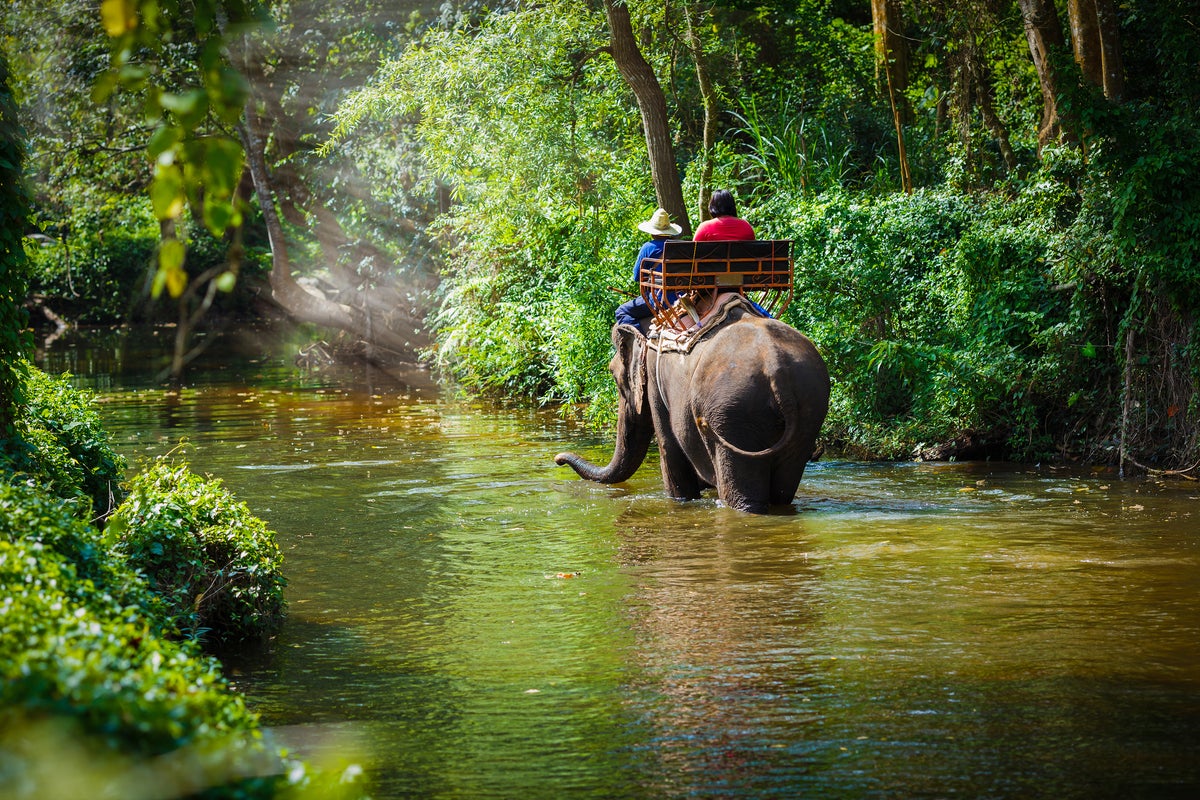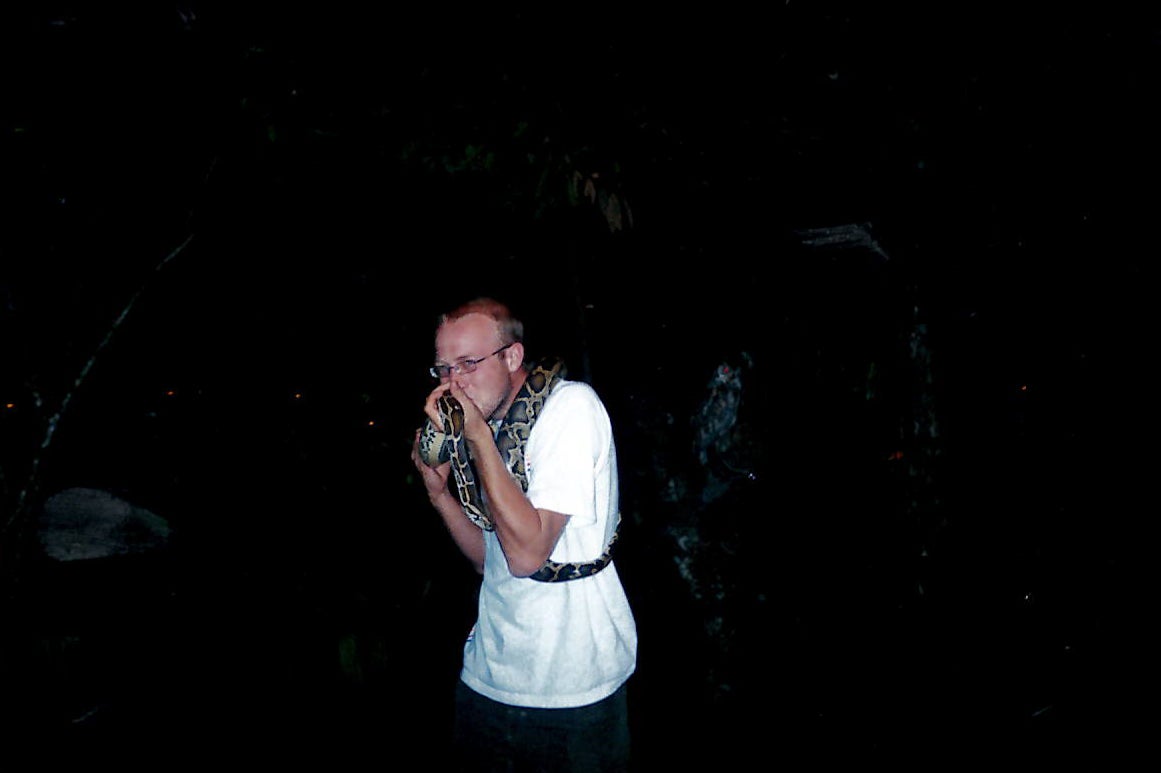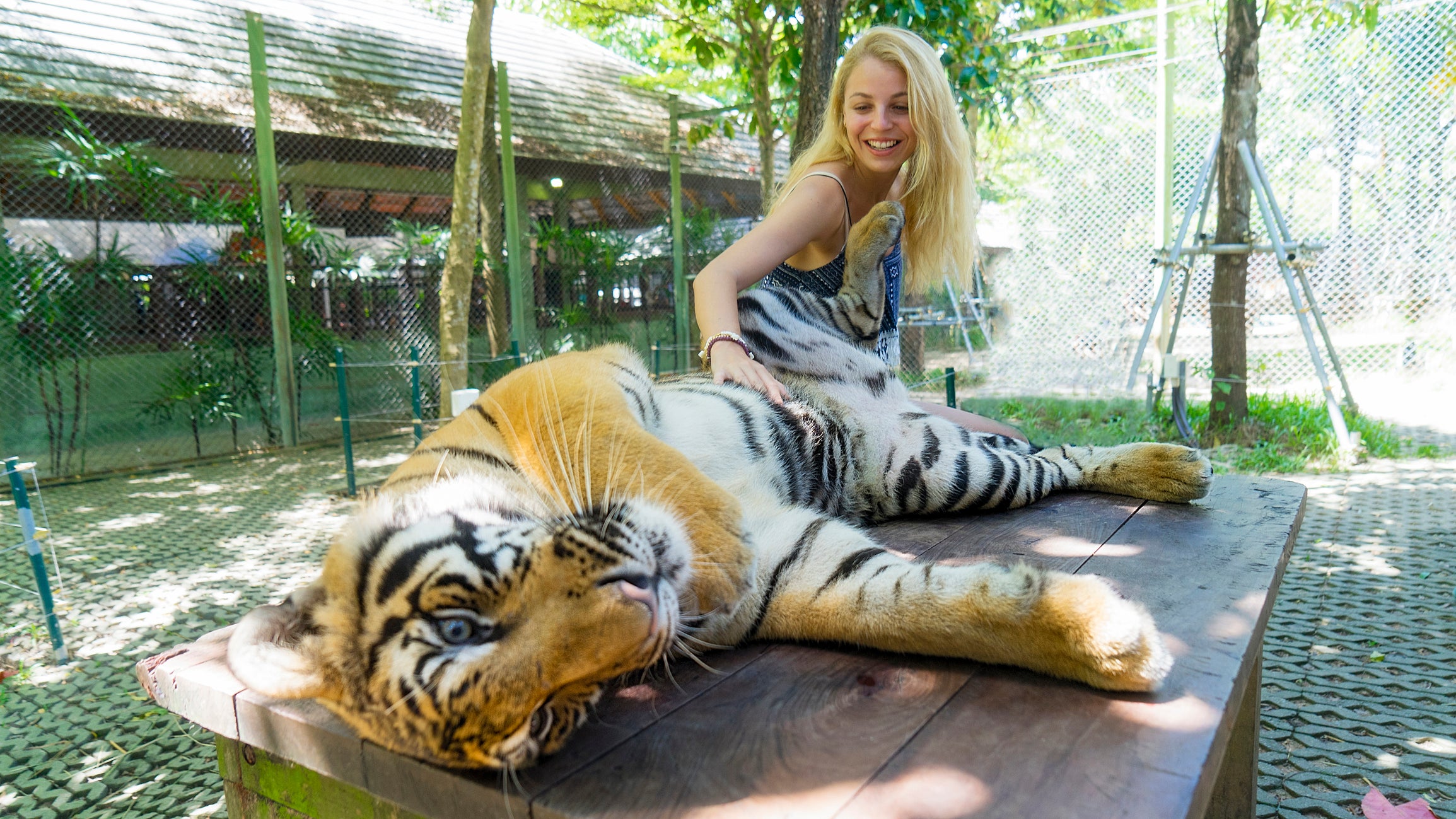The wildlife mistakes I’ve made while travelling – from cuddling chimpanzees to riding elephants
Most unethical wildlife tourism is down to a simple lack of awareness. Rather than blaming ourselves for past mistakes, Rob Perkins says the important thing is to learn how we can do better in future

There’s a notorious photo that my family loves to circulate at Christmas. It’s me on holiday in Ibiza cuddling a baby chimpanzee. Cute, right? Trouble is, that chimpanzee was born into captivity and probably spent years being passed from tourist to tourist for photo opportunities, before it grew too big to cuddle. Who knows what happened to it after that. I couldn’t have grasped any of that, of course, I was only three at the time. But I’ve made plenty of other mistakes with wildlife as an adult, too.
As a teenager, I clapped and cheered while captive orcas performed amazing tricks in an Orlando water park – they might still be there doing the same routine. After university I spent three months travelling in Southeast Asia. In Thailand, I watched as elephants played football and painted pictures, before going for a ride on one. In Singapore I posed for a photo with a python wrapped around my neck (luckily, he had already eaten that day).
At no point during any of these experiences did I think that I was doing anything wrong. And the same goes for most of us. Despite good intentions and a love for animals, our encounters with wildlife on holiday are often problematic – not by design, but because we’re simply unaware of the issues. We shouldn’t blame ourselves for making innocent mistakes like these, but we should try to understand how we can do better next time.
These are the wildlife mistakes to avoid on holiday.

Getting too close
In some cases wild animals have become habituated to people. That’s why lions and elephants in African parks rarely flee at the sound of a safari jeep, and curious dolphins will often swim around snorkellers. But generally speaking, animals would prefer to have as little as possible to do with humans, and when we get too close to them, it can make them stressed, scared, and potentially dangerous.
Approaching wild animals can interrupt them from breeding, nesting or feeding, and put your safety at risk. If it happens too often, they may begin to avoid certain places. There are other problems with getting too near. For instance, if you’re suffering from an infectious illness, it’s recommended that you don’t take part in gorilla watching, as you can spread it to them.
What to do instead: Be conscious of your surroundings, avoiding any protected areas, especially after dark when wildlife may be most active. Resist the temptation to approach wildlife for a closer look, and instead enjoy watching them from a respectful distance. Read previous reviews of wildlife tours to learn how their guides and drivers behave and report any problematic behaviour to your tour operator.
Read more: The world’s best safari lodges, from treetops tents to shipwreck cabins
Touching animals
It’s easy to see the appeal of stroking a tiger cub, or going for a walk through the bush with a lion. But this kind of experience has a dark side to it. These animals have likely been bred in captivity for the purposes of tourism, and will be drugged to keep them calm and safe around visitors. And if you’re walking with lions, it’s possible they are being deliberately habituated to humans to make them easier targets for trophy hunters.

There have also been instances of people on beaches picking up dolphins in the sea, or trying to pet seals. While this kind of behaviour may seem harmless, it can cause severe stress and even injury to marine life.
If you’re volunteering in an animal sanctuary, it’s worth bearing in mind that in most cases your role should involve as little physical contact with the animals as possible. That’s especially the case if the intention is to one day release the animals back into the wild.
What to do instead: Never touch any wildlife, especially big cats. If you see marine life close to, or on land, and believe it may be in difficulty, don’t approach it but instead report it to the appropriate authorities.
Read more: Simon Calder’s five best wildlife experiences from around the world
Watching performing animals
It’s always problematic when animals are being used for the purposes of entertainment, whether that’s watching elephants stand on their hind legs, or killer whales jump through hoops. While tourists see the exciting, heartwarming antics, they don’t see what goes on behind the scenes. Often these animals will spend their entire lives in captivity, subject to punishment if they don’t behave as they’re supposed to.
What to do instead: Avoid zoos or any other attraction where the animals are encouraged or forced to perform for tourists. It’s far more magical to see them behaving naturally and at ease in the wild.
.jpeg)
Feeding wild animals
Feeding wild animals may seem harmless; it might even seem that you’re doing them a favour. But it can foster dependency on humans, and encourages unnatural behaviours. In the worst cases it can put you, and the animals, at risk.
If you’re camping in America’s Yosemite National Park there are signs everywhere warning you to be careful of where you keep food, because the smell can attract hungry bears. If a bear does become too interested in picnicking tourists, it may have to be killed.
What to do instead: Never feed wild animals; even giving bread to ducks is bad for them, as it often has little nutritional value. If you see an animal that looks as though it is starving or in poor health alert your guide or tour operator, but don’t be tempted to feed it as you may inadvertently do more harm than good.
Buying products made from animals
Few people would now buy trinkets made from ivory, because we know the cruelty involved in obtaining it. But it’s not only elephants that are being pushed close to extinction for their body parts. Poachers will target any species, big or small, if they think there’s a market for it. Pretty bird feathers and shells are commonly used in handicrafts, while some restaurants in places like Iceland and Japan will serve whale meat to tourists.
What to do instead: In shops and markets, if you’re not sure what a product is made from then ask the seller, or your guide if you have one. Look out for souvenirs that contribute towards conservation initiatives.
Read more: Swap Phuket’s crowds for these Thailand islands
Focusing on one particular animal
When wildlife watching, if you’re focused on catching sight of one particular animal, be it a tiger, a blue whale or a golden eagle, you’ll be disappointed if it doesn’t make an appearance. And guides may act irresponsibly to keep their clients happy, such as getting too close to animals, or driving in areas that are out of bounds for vehicles. There can also be issues with overcrowding where too many tourists are gathered around just one animal, which may cause them stress.
What to do instead: Try to embrace the ‘safari’ mindset, thinking of a wildlife tour as a journey where every sighting has equal merit. Your guide’s knowledge will unlikely be limited to just one species, so taking an interest in different animals and plants can result in a much more insightful experience.
Rob Perkins is a writer at Responsible Travel.
Read more: Everything you need to know about going on safari

 UsenB
UsenB 































.jpg)